Pumpkin and features of its cultivation

Pumpkin is a frequent visitor to our gardens, its useful properties and taste attract many housewives. Therefore, those who decide to plant a pumpkin on their site for the first time should definitely familiarize themselves with the peculiarities of its cultivation.

Description
Pumpkin is an unpretentious plant that can be found in fields and gardens. It is actively used in cooking, for feeding livestock. The plant belongs to the pumpkin family. The etymology of the name is unclear, some linguists derive it from the Proto-Slavic language, but there are also versions about the Greek origin of its name.
A general description of what a large family looks like is difficult to compile, because of its numerous representatives. This could be:
- annual plant or perennial;
- blooming with yellow or white flowers, individually or in bunches;
- with a bell-shaped or funnel-shaped calyx and rim, with five, four or seven lobes;
- lobed, fleecy leaves are predominantly large, but there are also small ones;
- stem - curly, thin or thick, fleecy and smooth, with several edges;
- the correct name of the fruit is pumpkin, they are of different sizes, shapes, hard, large-fruited, nutmeg and others;
- there are claims that the melon culture comes from America, but you can find statements that the origin is now impossible to determine;
- the botanical description calls pumpkin a fruit, while consumers and culinary experts consider it a vegetable;
- seeds can be with or without a shell, of different weight (determined by the size of the pumpkin), but in the shape of an ellipse and with good germination for several years.
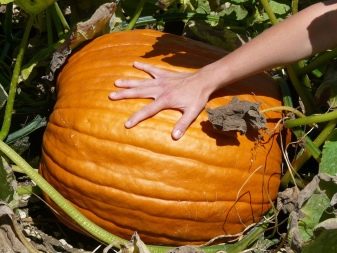

The differentiation of species is determined by different signs - sometimes it depends on where it grows, more often it is subdivided according to appearance. The grounds for distinguishing between varieties and species are taste, seed coat or lack thereof, lifespan, wild or cultivated form, decorativeness or suitability for food.
Previously, it was believed that dicotyledonous plants can only be with a creeping, long stem. Now breeders have also bred a bush pumpkin, with short stems. So it became somewhat difficult to classify the plant as a liana-like plant, twisting around the supports with a mustache or creeping branches from the planting site.
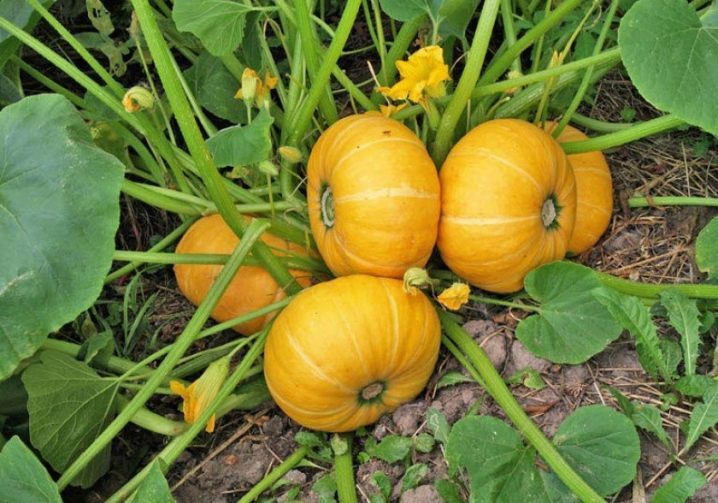
Is it a vegetable or a berry?
Extensive discussions are devoted to this topic, some authors are sure that a pumpkin, like a watermelon, is a large berry. The arguments of the supporters of different theories boil down to the following postulates:
- pumpkin - this is a fruit, since a part of a plant is used for food, on the same basis, botanists refer it to a vegetable (a culture that is grown to eat a certain part);
- it is said to be an edible fruit, representing a juicy fruit, which contains a lot of seeds (some vegetables fall under this definition), but on this basis, some scientists tend to attribute pumpkin seeds to fruits;
- calling the pumpkin a berry interferes with the standard certain of this fruit, as small and juicy, with a stone inside, but even if botanists agree that pumpkin seeds are berries, it is difficult for a common man to come to terms with this.
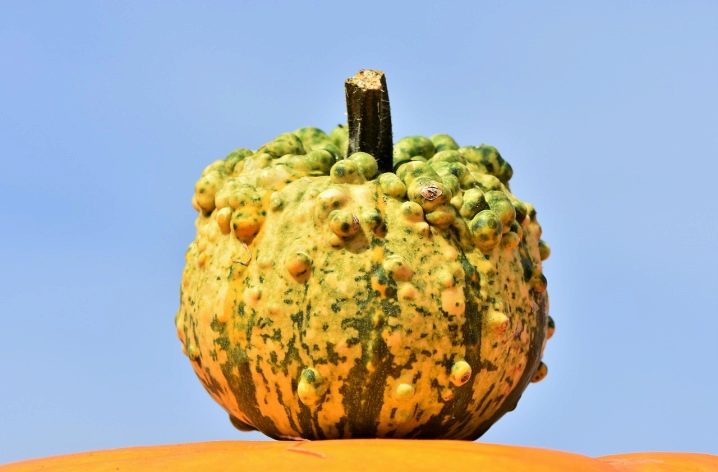
Origin story
Pumpkin is one of the oldest food plants. The most common hypothesis claims that her homeland is Central America. However, further differences of opinion of historians and archaeologists begin.Some believe that the pumpkin appeared on the territory of present-day Mexico, where it was grown five thousand years ago. Others are that species common in Europe have been found in the United States — California, Texas, and Florida.
The results of the expedition of Academician Vavilov (20s of the last century) confirmed that this plant also grew in Africa and it could have been brought from there. It is believed that the beneficial fruits come from South America. At the same time, different countries are called in which the progenitors of the current species grew:
- large-fruited (giant) - from Chile, Peru and Bolivia;
- nutmeg, like an ordinary hard-headed one, from the territory of modern Mexico and part of the United States, which once also belonged to her;
- mixed and figurative came from Peru and Mexico, but the pumpkin was definitely brought to India from Brazil by the Portuguese.
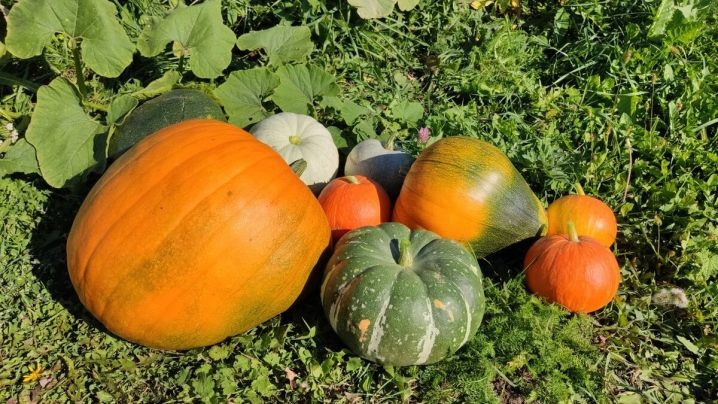
Recent scientific research did not clarify, but even more confused the etymological research, since 4 main cultural species were identified in the genus, each of which may have a variable number of chromosomes, morphological and biological differences.
The almost ubiquitous prevalence of the plant, the desire to grow it led to the emergence of useful features and hybrid varieties.... It is only known that before the arrival of Europeans in the other hemisphere, it was possible to find culture from the southernmost tip of Argentina to the north of today's Canada.
If the appearance in Europe is still correlated with some dates, then the appearance of the pumpkin in Russia is even more mysterious. It is known to be dated to the 16th century. Coming from Europe, the tasty pulp was appreciated quickly and after a short time was grown almost everywhere.
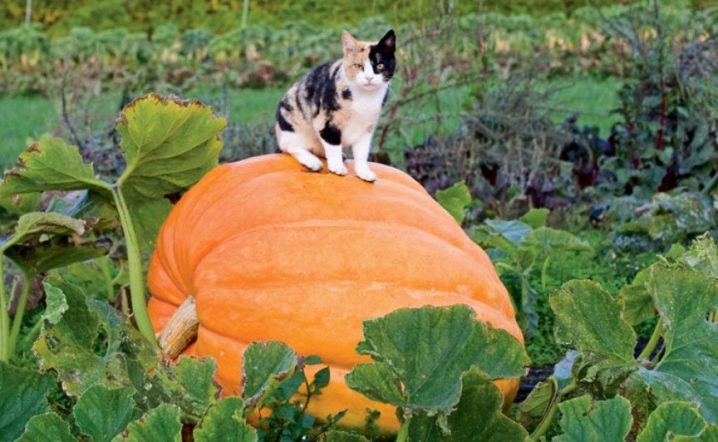
Views
The classification of a plant begins with a very conditional division into 2 main types. There are cultural and wild species, there are more than 20 of them.
- figurative is so named for its resemblance to a fig tree - with variegated fruits and black seeds;
- smelly - with small leaves and bitter fruits, a wild plant that also gives root crops;
- ordinary (kitchen) has more than 100 varieties, edible and decorative;
- giant - can be bush, mammoth, almond, turban, the main criterion of difference is the shape and color of the fruit;
- Egyptian (nutmeg), with a widespread habitat, a pleasant smell and tasty fruits, is found throughout America and in Eurasia, in the Middle East;
- long-leafed, with numerous small fruits, like ornamental, is not among the demanded, it is grown in certain regions and for specific needs.
Healthy squash is called a relative of pumpkin, a storehouse of minerals and vitamins. It looks like a cross between orange fruits and zucchini, but does not repeat the taste characteristics of either one or the other. Japanese, in different countries is called in its own way: chestnut, winter, or "hokkaido" (in Russia). It tolerates drought well and has a pleasant peculiar taste when ripe. Cold-resistant varieties are suitable for growing in regions with difficult climates.
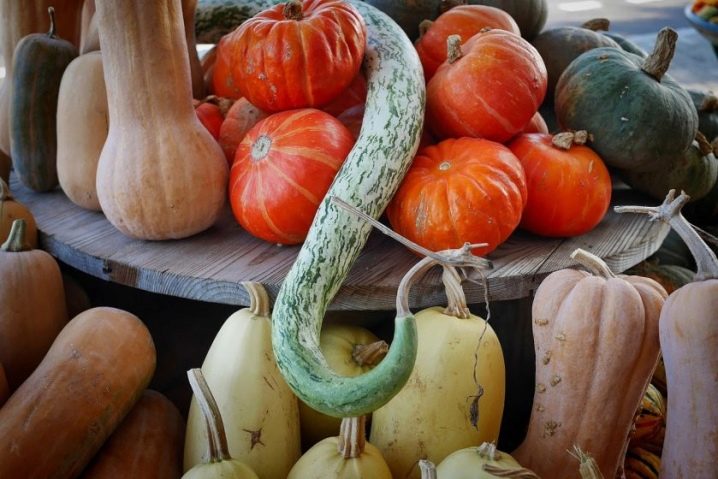
Landing
The choice of a landing site depends on the region of residence. In the south, relatively sheltered places with soils saturated with moisture are chosen. In the north, these are the southern slopes of the hills, light soils with little moisture and good illumination. The distance between the holes is maintained at least half a meter. Large pumpkins grow only on fertile soil, it is desirable that this is the upper fertile layer, where small roots are attached, and not the main root.
Seeds
This is the main method of planting in open ground. Before completing the planned, fertilizer must be applied in the fall. You can make beds or plant directly in the ground - it depends on the type of soil and climatic conditions.
Planting success depends on the predecessors. Onions, garlic or legumes are recommended.
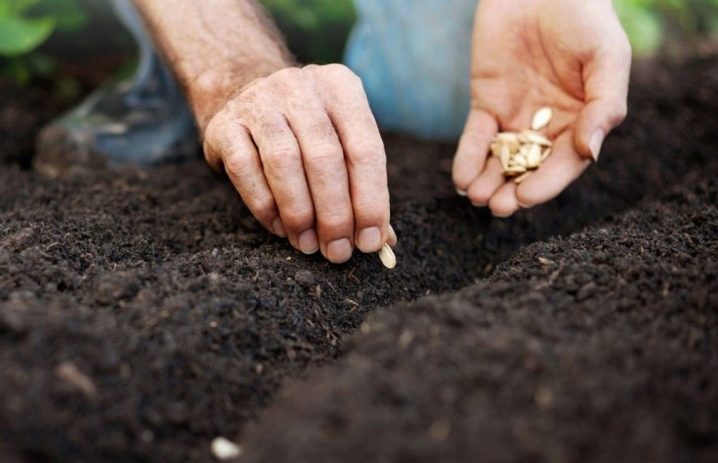
Seedlings
Butternut squash is grown exclusively using the seedling method, in other cases it is an alternative to seed propagation... The material is treated with a weak solution of potassium permanganate, germinated on a damp cloth, and then planted in separate containers - peat pots, plastic cups. The transplant is carried out after the appearance of the third leaflet.
The soil should warm up to 15 degrees, but the plants are covered with a film to create the effect of a greenhouse for a time when it is still cold at night.

Care
Agricultural engineering is not difficult. Enough weeding from weeds, loosening from the hard crust on the topsoil... Watering is not needed during the period when the ovary appears, otherwise only large leaves will grow during the period of pumpkin growth. After it is ripe, watering is stopped so that sugar, vitamins and trace elements accumulate in the fruit.
Two dressings are enough. The first is made with ash - during the flowering period, the second - with organic matter with phosphorus-potassium fertilizers. It is carried out after the appearance of large flowers.
For those who intend to grow large pumpkins, pinching of the lashes is recommended.
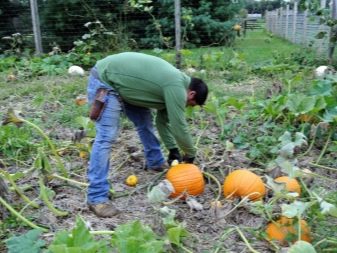
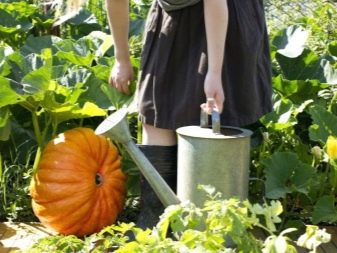
Diseases and pests
The main causes of the disease are improper agricultural practices. Pumpkin is considered a plant with strong immunity, but it can develop bacteriosis. This is an infection that is carried by birds and just the wind. Powdery mildew, downy mildew, root rot, green spotting and yellow mosaic are also possible. Wireworms, melon aphids, spider mites will require early detection, the use of folk methods or the achievements of industrial chemistry.

Collection and storage
The timing of collection is variable and depends not only on the characteristics of the climate, but also on the selected variety. Large and medium-sized specimens are left for storage. If the weather does not permit, pumpkins are placed in a warm and bright room for ripening, like green tomatoes. Ripe fruits are stored in a cool and dry place, but no frost.
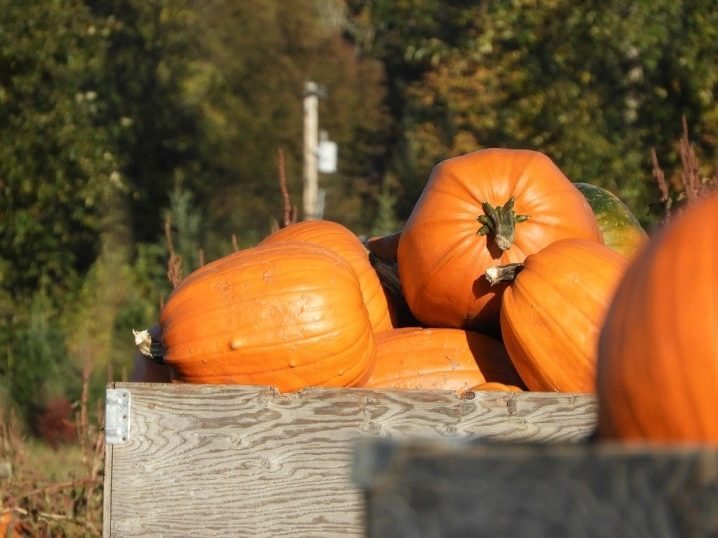













The comment was sent successfully.